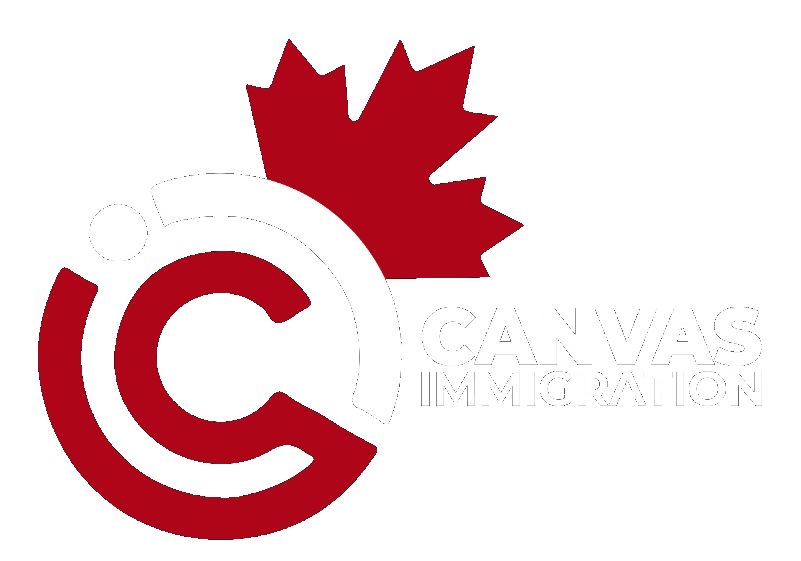Last Updated On 12 May 2025, 9:23 AM EDT (Toronto Time)
Ontario’s colleges and universities are grappling with a severe financial crisis, driven by a sharp decline in international student enrollment and restrictive government policies.
Institutions like Algoma University, Cambrian College, Northern College, and Sault College are suspending programs, cutting budgets, and reassigning staff to navigate unprecedented revenue losses.
Table of Contents
For years, international students have been a financial lifeline for Ontario’s post-secondary institutions.
With tuition fees significantly higher than those for domestic students, international enrollment has subsidized programs and kept schools afloat amid frozen domestic tuition rates.
However, recent federal policy changes have disrupted this model:
Caps on International Student Visas: In 2024, the Canadian government introduced a cap on international student study permits, reducing the number of new students by nearly 50%.
This abrupt policy shift caught institutions off guard, leaving them with budgets based on pre-cap enrollment projections.
Restrictions on Post-Graduate Work Permits (PGWPs): Many programs, particularly business graduate certificates, no longer qualify for PGWPs.
These permits allowed international students to work in Canada after graduation, making programs highly attractive.
With this incentive gone, interest in these courses has plummeted.
Stricter Immigration Rules: Changes to immigration policies have made Canada less appealing for international students.
Uncertainty around visa approvals and post-graduation opportunities has driven prospective students to countries like Australia and the UK.
At Algoma University in Sault Ste. Marie, these changes have led to a staggering 50% drop in enrollment, slashing operating revenue from $264.6 million in 2024 to a projected $123.5 million for the 2025-26 academic year.
Similar declines are affecting colleges across the region, forcing administrators to make tough decisions.
To cope with the revenue shortfall, institutions are suspending programs, particularly those with low international enrollment.
Here’s a breakdown of the measures being taken:
Algoma University
Enrollment Decline: A 50% drop, primarily due to the ineligibility of business graduate certificates for PGWPs.
Program Suspensions: Five low-enrollment programs will not admit new students in 2025.
Interim President Donna Rogers emphasized that this is not a reflection of program quality but a necessity to ensure the university’s survival.
Staffing Impact: Algoma has avoided layoffs but reduced contracts for sessional instructors and canceled summer courses.
Alice Ridout, vice-president of the Algoma faculty union, noted the unsettling impact on faculty morale.
Cambrian College
Revenue Loss: A $40 million drop in revenue prompted the elimination of 22 positions and the suspension of 10 academic programs.
Staff Reassignment: No layoffs have occurred, with seven affected employees being reassigned.
However, union president Neil Shyminsky warned that future cuts remain uncertain due to ongoing policy changes.
Program Focus: Suspended programs were popular among international students when PGWPs were available but have seen declining interest since the policy shift.
Northern College
Financial Strain: Facing a $6 million deficit in 2024 and a projected $12 million deficit for 2025, Northern is under significant pressure.
Faculty Reductions: Thirteen professors have taken early retirement, reducing the full-time faculty to a historic low of 70 across its campuses in Timmins, Kirkland Lake, Haileybury, and Moosonee.
Union Concerns: Neal McNair, president of OPSEU Local 653, expressed hope that the faculty will stabilize but acknowledged the challenges of operating with a reduced workforce.
Sault College
Program Suspensions: Several programs have been paused, with the college’s budget to be finalized in June 2025.
Leadership Response: President David Orazietti is exploring all options, including lobbying for increased government funding and a review of the domestic tuition freeze.
These measures reflect a broader trend across northeastern Ontario, where institutions are prioritizing financial stability over program diversity.
However, the long-term implications of these cuts are raising concerns among faculty, students, and administrators.
The decline in international enrollment is not just a financial issue—it’s reshaping the academic and social fabric of these institutions.
Faculty Challenges
Reduced Contracts: Sessional instructors are facing fewer opportunities, with last-minute course cancellations becoming common.
Morale and Uncertainty: Faculty unions report growing unease among members, who fear further cuts as policy changes continue to unfold.
Retirement Incentives: Early retirement packages are being offered to reduce staff numbers without resorting to layoffs, but this risks depleting institutional expertise.
Student Impacts
Limited Program Options: Program suspensions are reducing choices for both domestic and international students, particularly in specialized fields.
Increased Competition: A slight uptick in domestic enrollment is not enough to offset the loss of international students, leading to fiercer competition for limited spots.
Campus Diversity: International students contribute to cultural diversity on campus. Their reduced presence may diminish the global perspective that enriches the academic experience.
Economic Impact: International students spend on housing, food, and local services, supporting northeastern Ontario’s economy.
A 50% enrollment drop could hurt local businesses in cities like Sault Ste. Marie, Sudbury, and Timmins.
Workforce Shortages: Programs tied to PGWPs often trained students for in-demand fields like business and technology.
Their suspension could exacerbate labor shortages in key industries.
The crisis in northeastern Ontario’s post-secondary sector is the result of a perfect storm of policy and economic factors:
Dependence on International Tuition: Ontario colleges and universities have relied heavily on international students to offset frozen domestic tuition rates, which have not increased in years due to provincial regulations.
Federal Policy Shifts: The Canadian government’s decision to cap international student visas and limit PGWPs was driven by concerns over housing shortages and immigration system strain.
However, these measures have had unintended consequences for higher education.
Global Competition: Countries like the UK, Australia, and the US are actively recruiting international students with more favorable visa and work policies, making Canada less competitive.
Delayed Response: Many institutions were unprepared for the speed and scale of the enrollment drop, as budgets were set before the federal government announced its policy changes.
Donna Rogers, Algoma University’s interim president, highlighted the suddenness of the shift: “The environment around us has changed.
[The federal government] is literally cutting [enrollment] in half with one fell swoop, after everybody’s budgets were done for last year.”
Colleges and universities are taking a multi-pronged approach to address the crisis:
Program Restructuring: Suspending low-enrollment programs allows schools to redirect resources to high-demand areas, such as STEM fields, which align with government funding priorities.
Staff Management: Reassigning instructors, offering early retirements, and reducing sessional contracts help avoid layoffs while cutting costs.
Lobbying Efforts: Institutions are advocating for increased government investment and a review of the domestic tuition freeze.
Sault College President David Orazietti expressed hope that these efforts will lead to a revised funding formula.
Diversifying Revenue: Some schools are exploring alternative revenue streams, such as partnerships with industry or expanded online programs, to reduce reliance on international tuition.
Marketing to Domestic Students: While domestic enrollment has seen a slight increase, institutions are intensifying recruitment efforts to attract more Canadian students.
The Ontario government has acknowledged the challenges facing the post-secondary sector but has not yet offered comprehensive solutions.
A recent announcement of $750 million over five years to fund 20,500 STEM seats was touted as a significant investment.
Bianca Giacoboni, a spokesperson for the Ministry of Colleges, Universities, Research Excellence and Security, stated, “Funding for colleges and universities is higher than ever,” citing an additional $1.3 billion invested last year and $5 billion annually.
However, critics argue that this funding does not address the immediate crisis caused by the international enrollment drop.
The freeze on domestic tuition remains a sticking point, as it limits institutions’ ability to generate revenue independently.
Looking ahead, the future is uncertain.
Faculty union leaders like Neil Shyminsky warn that ongoing policy changes make it “incredibly difficult to see more than a year into the future.”
A new federal government could introduce further immigration reforms, while global competition for international students is likely to intensify.
To stabilize northeastern Ontario’s post-secondary sector, stakeholders are proposing several solutions:
Lift the Domestic Tuition Freeze: Allowing modest tuition increases for Canadian students could reduce reliance on international fees while maintaining affordability.
Reinstate PGWP Eligibility: Restoring work permit eligibility for key programs could revive international student interest and support Canada’s labor market needs.
Increase Base Funding: Direct government investment in colleges and universities would provide financial stability and reduce the need for drastic program cuts.
Streamline Immigration Policies: Simplifying visa processes and offering clearer pathways to permanent residency could make Canada more attractive to international students.
Diversify Program Offerings: Developing programs aligned with emerging industries, such as green technology or artificial intelligence, could attract both domestic and international students.
The crisis in northeastern Ontario is a microcosm of challenges facing Canada’s post-secondary sector.
As institutions nationwide grapple with similar enrollment declines, the ripple effects could reshape higher education for years to come.
Key questions remain:
Will Canada remain a top destination for international students? Policy changes and global competition are eroding Canada’s appeal, potentially leading to long-term enrollment declines.
Can institutions adapt quickly enough? The speed of the current crisis has exposed vulnerabilities in the funding model, highlighting the need for more resilient financial strategies.
What does this mean for students? Reduced program options and faculty cuts could impact the quality and accessibility of education, particularly in underserved regions like northeastern Ontario.
The sharp decline in international student enrollment is pushing northeastern Ontario’s colleges and universities to the brink.
Program suspensions, budget cuts, and faculty reductions are stopgap measures that cannot address the root causes of the crisis.
To safeguard the future of higher education in the region, policymakers, institutions, and communities must work together to advocate for sustainable funding, flexible immigration policies, and innovative program development.
As Algoma University’s Donna Rogers warned, “If we don’t start to do something, the entire university is in jeopardy.”
This sentiment echoes across the region, underscoring the urgency of addressing this unprecedented challenge.
The time to act is now—before the classrooms of northeastern Ontario fall silent.
Purnima Mann
Something went wrong. Please refresh the page and/or try again.
You may also like: New GST Payment Increase In Canada Effective July 2025
New IRCC Update On Processing Times As Of May 2025
Canada May Launch New Immigration Measures For Indians and Pakistanis
5 New CRA Benefit Payments Coming For Ontario Residents In May 2025

